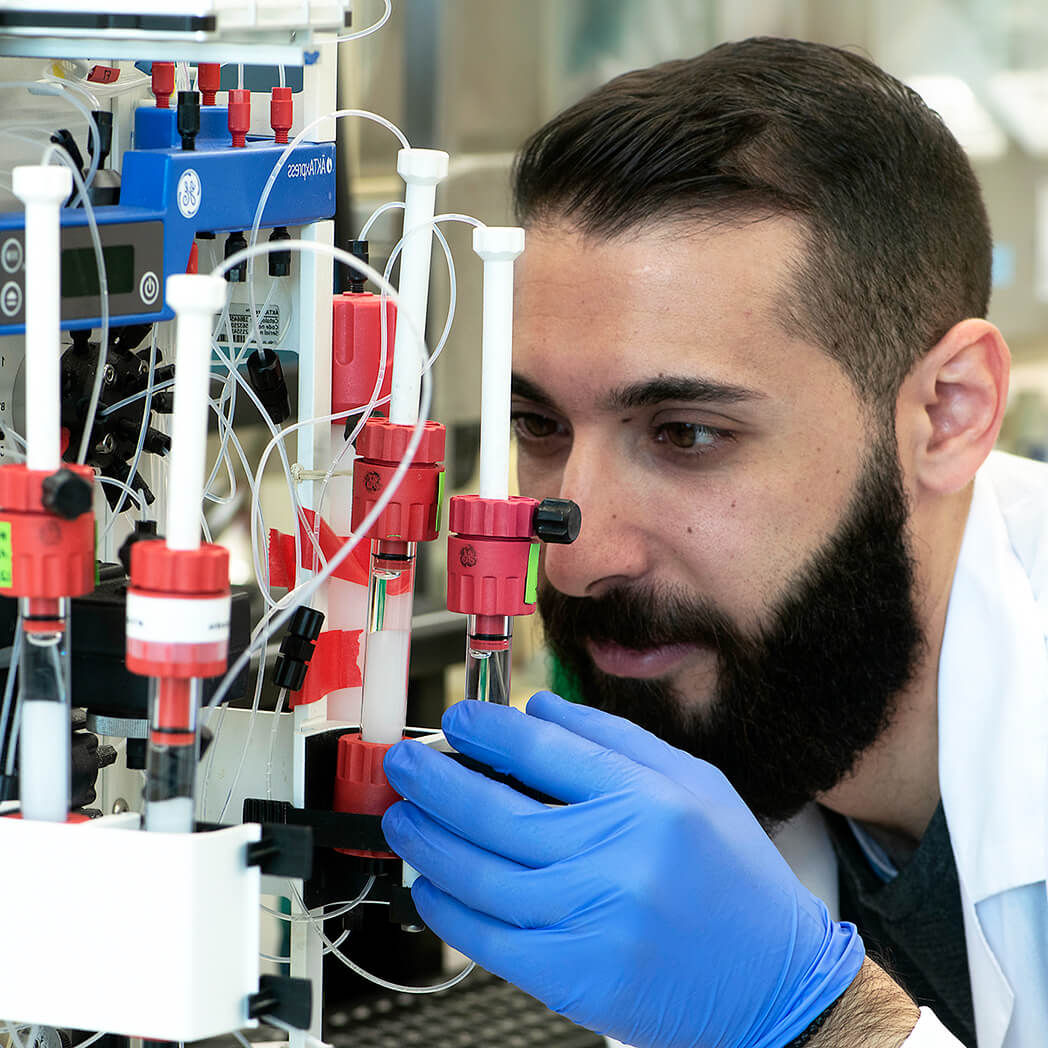Overview
|
Cat #:
A-510
Purity: >98%
MW: 475.54
Form: Lyophilized
Anhydroryanodine (#A-510) is a highly pure, natural, and biologically active compound.
MW: 475.54
For research purposes only, not for human use
Specifications
Properties
Technical Specifications
Origin Ryania speciosa.
MW 475.54
Purity >98%
Molecular formula C25H33NO8.
Source Natural
Chemical name 1H-Pyrrole-2-carboxylic acid, 3a,4,5,6,7,7a,8,8aoctahydro-3a,4,7a,8a-tetrahydroxy-3,5,8-trimethyl-2-(1-methylethyl)-10-oxo-1H-3b,8-(epoxy ethano)cyclopent(a)inden-1-yl ester, (1R-(1-alpha,3a-beta,3b-alpha,4-alpha,5-beta,7a-beta,8-alpha,8a-beta))-.
Biological Activity
Effective concentration 100 µM - 1 mM.
Activity Anhydroryanodine is a non-active analogue of ryanodine1.
References
- Sutko, J.L. et al. (1997) Pharmacol. Rev. 49, 53.
Solubility and Storage
Shipping and storage Shipped at room temperature. Product as supplied can be stored intact at room temperature for several weeks. For longer periods, it should be stored at -20°C.
Solubility Methanol. Centrifuge all product preparations before use (10000 x g 5 min).
Storage of solutions Up to one week at 4°C or six months at -20°C.
Scientific Background
References
Scientific background
Ryanodine (#R-500) is a natural alkaloid isolated from the stem and roots of Ryania Speciosa, a shrub that grows in tropical locations in Central and South America. Ryanodine is a modulator of intracellular Ca2+ release channels1.
Ryanodine was found to be a potent paralysis inducer of skeletal and cardiac muscles2 by inhibiting the SR Ca2+ release through direct binding with the high affinity Ryanodine receptor (RyR) Ca2+ channel as a tetrameric complex2,3.
Anhydroryanodine is an anhydrous non-active form of ryanodine obtained by dehydration of ryanodine4. Anhydroryanodine can be used as a negative control for ryanodine activity4.
References
- Elison, C. and Jenden, D.J. (1967) Biochem. Pharmacol. 16, 1347.
- Frank, M. and Sleaton, W.W. (1975) Res. Commun. Chem. Pathol. Pharmacol. 11, 65.
- Campbell, K.P. et al. (1987) J. Biol. Chem. 262, 6460.
- Sutko, J.L. et al. (1997) Pharmacol. Rev. 49, 53.
Last Update: 08/01/2025

